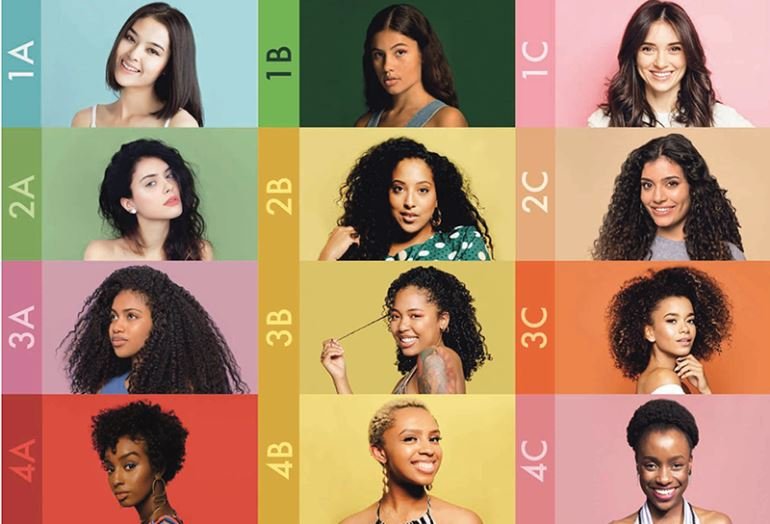Hair Type Comparison
In this post, it will be time to compare hair types to find out which hair type your hair type belongs to. First of all, hair type is born with its birth. First of all, there are different hair types for each race as mankind continues to evolve to adapt to the environment to which they belong.
First, let’s look at how hair types differ by race.
1. Hair type comparison by race
| Ethnicity | African American | Asian | Caucasian |
|---|---|---|---|
| Thickness | Approximately 56 micrometre | Approximately 85 micrometre | Approximately 77 micrometre |
| Density | Approximately 180 hair / cm2 | Approximately 160 hair / cm2 | Approximately 250 ~ 310 hair / cm2 |
| Shaft structure | Curly to Coily | Straight, Straight to Curly | Straight to Curly |
| Number of hair strands | 50,000 ~ 100,000 strands | 80,000 ~ 120,000 strands | 100,000 ~ 140,000 strands |
| Section | Flat Oval | Round | Lightly Oval |
| Anatomy | 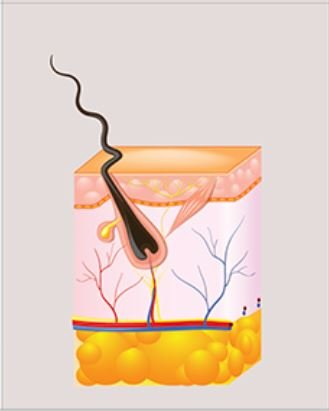  | 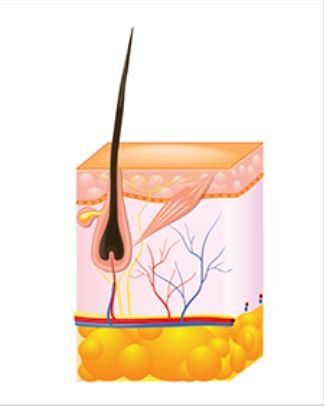  | 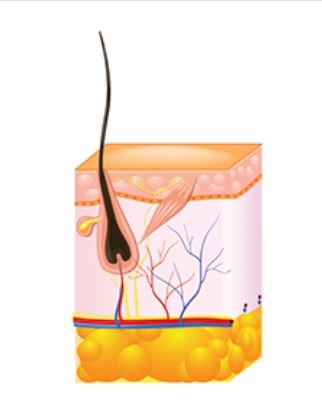  |
2. The 12 Major Hair Type Comparison
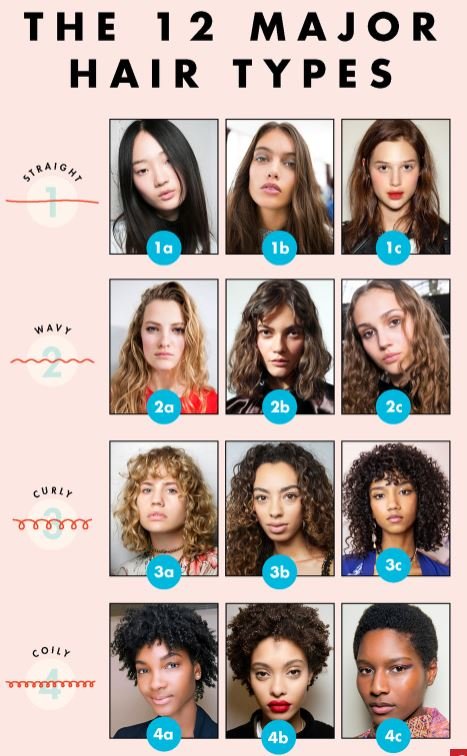

The material you will see this time is 12 Major Hair Types.
If you look at the picture above, you can see that there are basically 4 types of hair, and each type is subdivided into 3 types.
Type 1 – Straight
Type 2 – Wavy
Type 3 – Curly
Type 4 – Coily
First of all, it is subdivided into the four types above, and I will explain the characteristics of each type in detail below.
1) Type 1 – Straight
Straight hair can range from thin, smooth hair to thick, coarse hair. The similarity with straight hair is that most scalps are oilier than other types, and the oils from the scalp travel down the hair to help keep it hydrated and healthy.
type 1a
1A hair is the most straight hair among straight hair and has a thin and soft touch. This type of hair is thin and can easily fall out with pins or hair bends, so be careful and use products that can give strength to the hair.
type 1b
1b hair is closest to straight hair but contains some wavy hair sections and also contains coarse hairs. This type of hair is more likely to have an oily scalp rather than damage to the ends, so it is recommended to pay attention to scalp care as well as hair.
type 1c
1c hair is thicker and coarser than the first two straight hair types, so it is more prone to frizz and dryness. For this type, it is better to take care of hair nutrition through hair treatment or protein.
2) Type2 – Wavy
The wavy type is characterized by a natural curve like a wave.
type 2a
2a hair has straight to medium waves in an S shape. Compared to other Type 2, it tends to be thinner and flatter, and you can easily create straight hair through a flat iron.
type 2b
2b hair tends to have more curly waves than 2a. This type of hair is easily brittle when damaged, so it needs constant moisture and nutrition.
type 2c
2c hair has a loose S-shape and a rough feel. For this type, use a light curling cream to make your hair more defined.
3) Type3 – Curly
Curly types should actually have curls, like loose springs. It is said that this curl is often a combination of various curl textures on one head.
type 3a
3a hair has darker curls than 2c type, and the hair is thinner and is said to be sensitive to moisture, wind, and dryness.
type 3b
3b hair usually has curls in a finger-length bridle. This type is said to be more bouncy and tough than 3a. This type easily becomes frizzy when dry like 2b, so it is recommended to supply enough moisture to the hair.
type 3c
3c hair is said to have tighter curls than 3b. So, it is characterized by being thickly bundled, so that it looks more voluminous. This type of hair is vulnerable to dryness and damage, so it is recommended to properly use hair moisturizing oil.
4) Type 4 – Coily
The coily type has a spring-like pattern that is tightly wound with curly hair. It is the softest and most prone to damage among the 4 hair types above, but it can be styled the most in terms of styling.
type 4a
4a hair is characterized by having the smallest coil shape. Since this type can easily lose moisture and the definition of curls, it is helpful to use a curling gel for coily hair.
type 4b
4b hair is characterized by a zig-zag bend in the spring. Since this type is weaker to dryness than 4a, it is recommended to use a moisturizing gel.
type 4c
4c hair has a sharper Z shape than 4b. Compared to other hair types, there is less cuticle layer, so the hair is more vulnerable to moisture retention and damage. It is helpful to use hair lotion or leave-in conditioner for this type.
I learned about 12 types of hair. I hope it will help you find the hair type that suits you and use it as a reference when making hair care products.
-The Nature Atelier-
If my article was helpful, please comment and visit my SNS. It will be a great help for me to continue running the site.
Twitter
https://twitter.com/Atelier_Eden
Instagram
https://www.instagram.com/the.natureatelier
